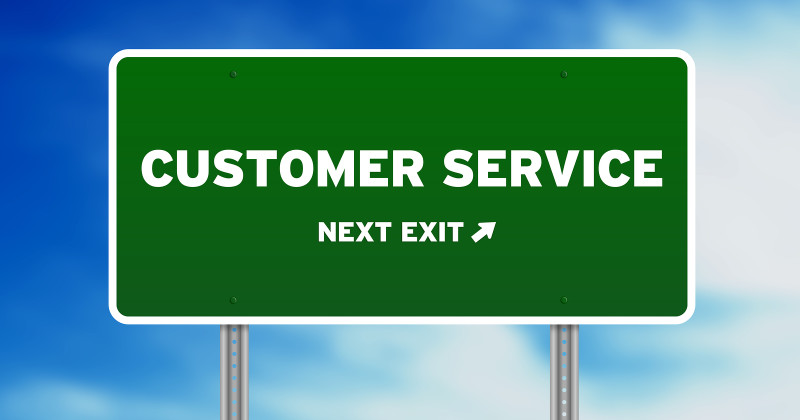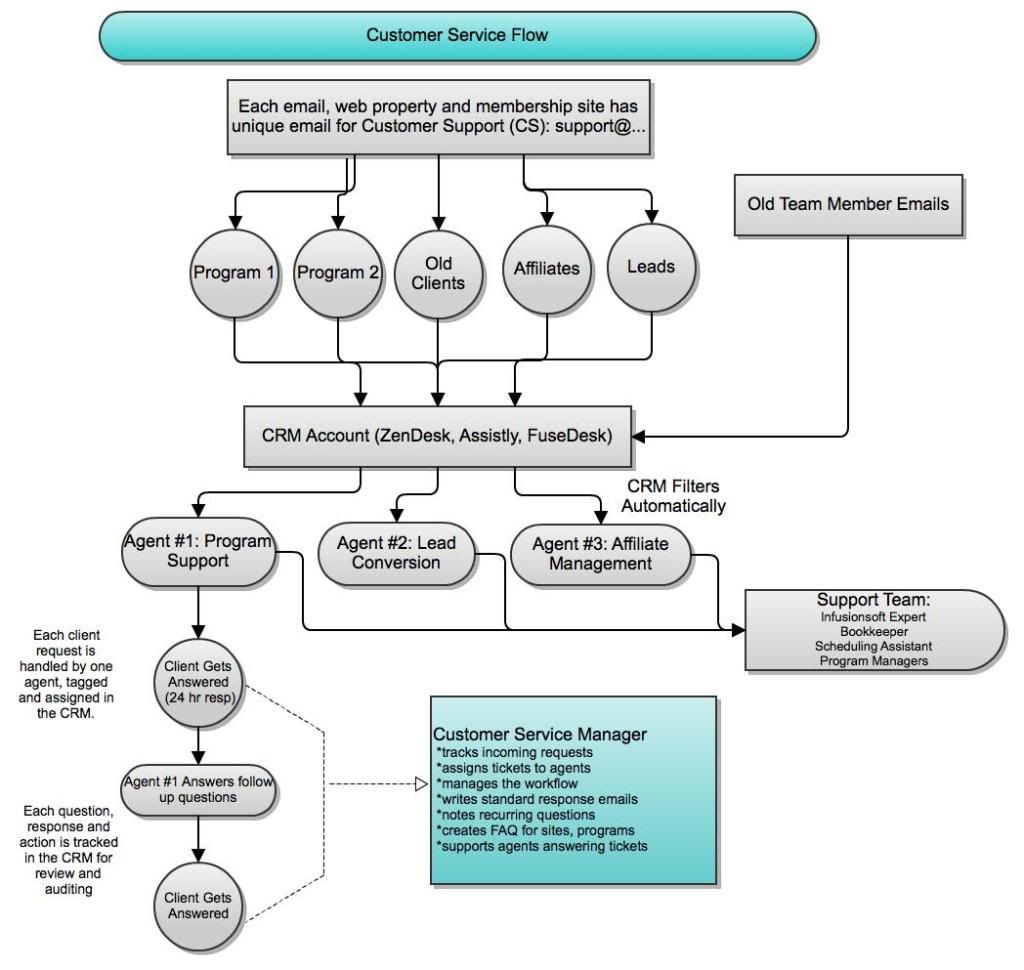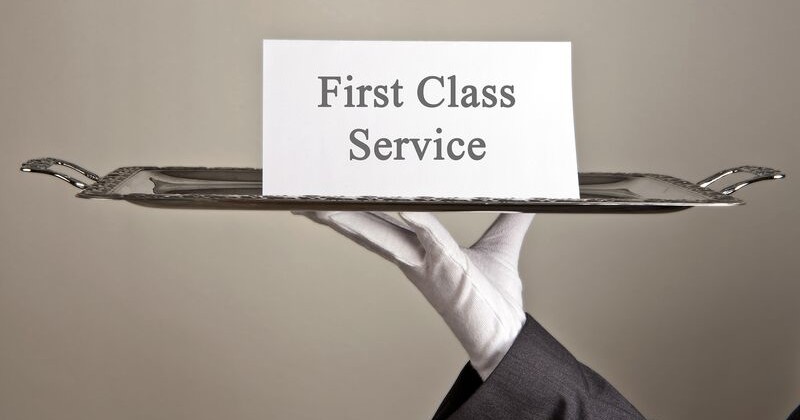In the spirit of taking a basic system and making it comprehensive here’s a representation of a complete customer service system for a larger business.
When you build a business that serves more people you have two choices: continue to serve everyone yourself and burn out or build a team that can support the clients you serve.
The beginner customer service model I shared last week is a critical condition for your success. When your business begins to grow and leads and clients are coming to you daily there is no time to stop and create these systems.
Instead you’ll be able to easily hire and train an assistant to support you by a system that Michael Gerber calls Orchestration. From The E-Myth Revisited:
Orchestration is the elimination of discretion, or choice, at the operating level of your business.
Without Orchestration, nothing could be planned, and nothing anticipated – by you or your customer. If you’re doing everything differently each time you do it, if everyone in your company is doing it by their own discretion, their own choice, rather than creating order, you’re creating chaos.
If you don’t have a basic customer service system, don’t focus on building the complex one yet. Focus on serving 12 clients really well before you try to serve 5,000. If you have a mature business and do not have these systems, here’s a peek at what a mature customer service model can look like. For all those small business owners, see what is possible in the future of your business.
This model takes all of the programs and offers you make to your audience and tags them with a specific email pathway so you spend less time sorting emails. It also accounts for the fact that you will probably have older team members or email accounts that should not be abandoned but redirected to ensure that you do not miss any opportunities.
Remember that if you are new in business you likely have 2 or 3 offers and can create the system as you go. As you grow, you’ll continue to develop and improve your systems based on what works, a process Michael Gerber calls Innovation.
Innovation is the heart of every exceptional business. Innovation continually poses the question: What is standing in the way of my customer getting what he wants from my business?
For the Innovation to be meaningful it must always take the customer’s point of view. At the same time, Innovation simplifies your business to its critical essentials. It should make things easier for you and your people in the operation of your business; otherwise it’s not Innovation but complication.
It seems simple right? Answering the question ‘what does my customer want?’ is an on-going process and at the heart of your business. And it’s often a system that takes the “left brain thinker who can take your vision and put in all the steps, the “how” it will get done and execute the plan and handle all the details.” as I wrote about here.
Instead of investing more time and money in marketing efforts or developing programs, invest in deeply serving your customers. Create the experience that will keep your current clients coming back and attract new leads and customers to your programs. The truth is that most companies will not invest the time or attention to this step so by doing the work you’ll stand out and above the rest.










